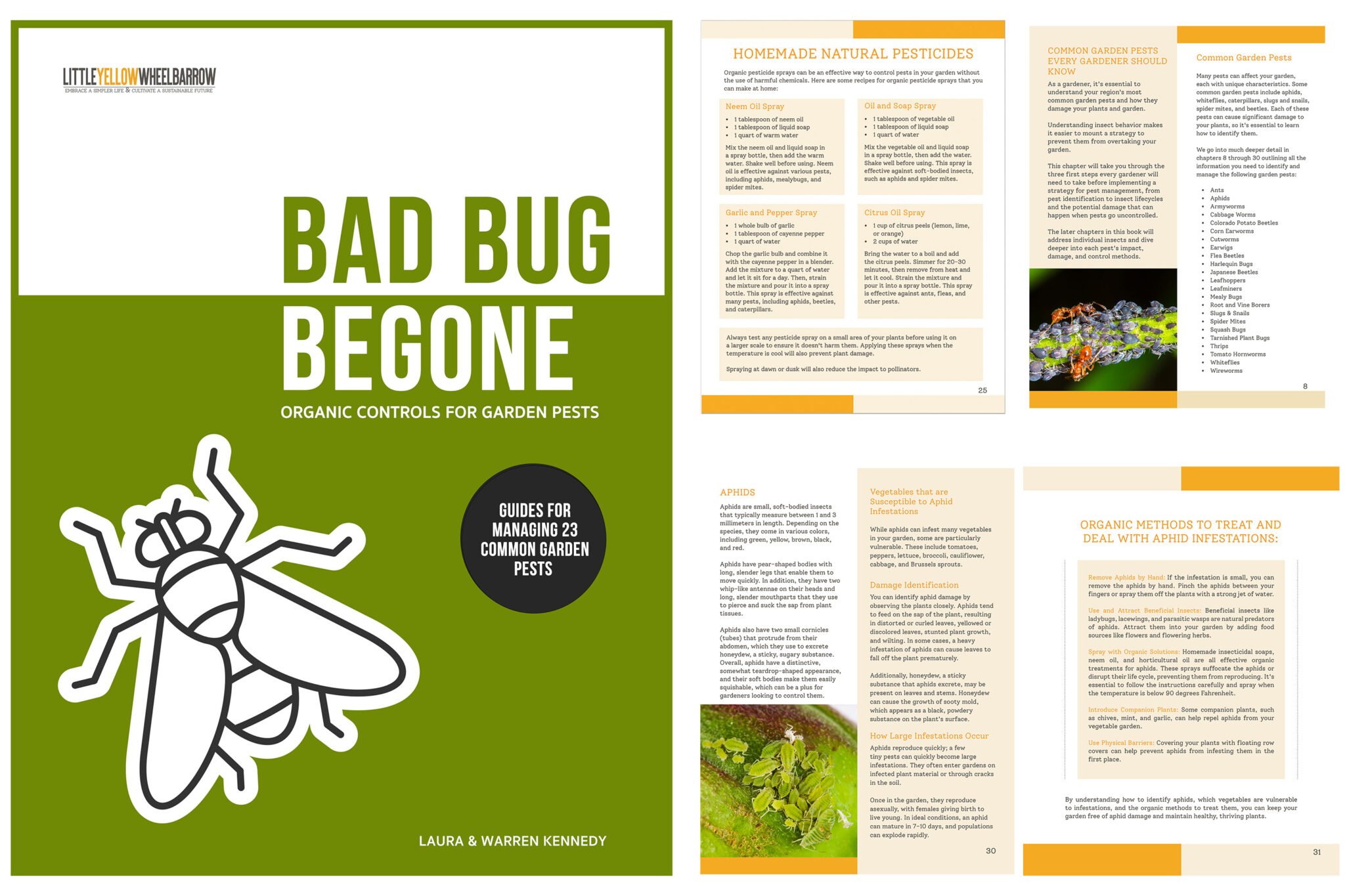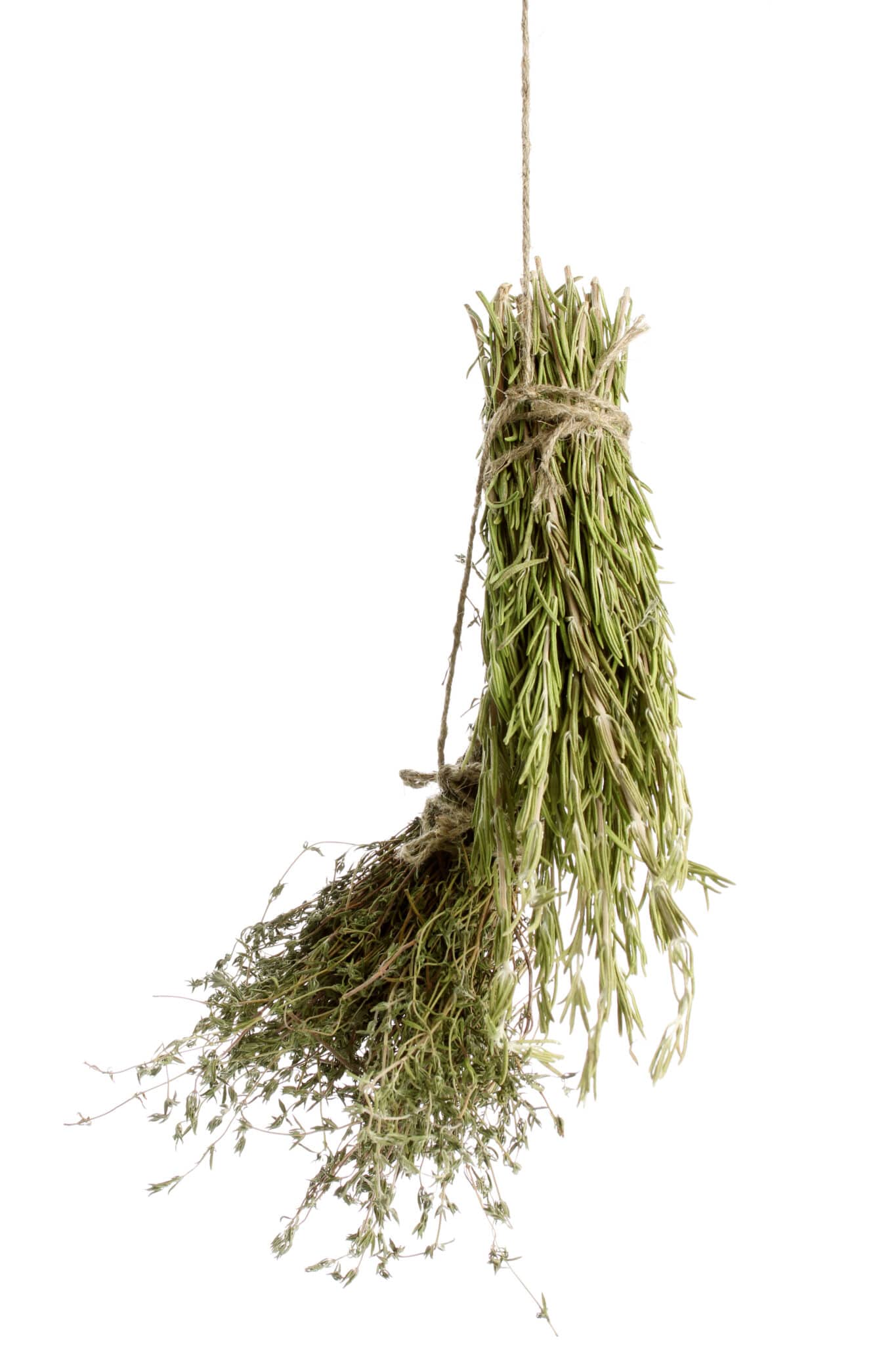Rosemary Plants: How To Grow, Harvest & Use Them (2022)
Whether you like to garden, cook, or make DIY body products, rosemary is a must-have for your garden! Learn about the countless ways rosemary plants provide benefits in the garden, the kitchen, and for your health.

Rosemary (scientific name Salvia rosmarinus, or often rosmarinus officinalis, or rosemarinus officinalis) is a flowering, woody-stemmed shrubby perennial herb that has gray-green needle-like leaves and a beloved woodsy fragrance. Part of the mint family and native to the Mediterranean region, it’s been used for its many benefits for centuries.
It’s a hardy plant that thrives in a wide range of climates as long as it doesn’t freeze. To learn more check out our full guide to winter gardening!
Rosemary plants also grow well as indoor herbs! I highly recommend trying to grow rosemary in a sunny kitchen window, so you have an endless supply of fresh herbs within arm’s reach for all your culinary needs.
Benefits of Rosemary
Before I share how to grow and propagate rosemary plants, I wanted to share some of the benefits they have.
Rosemary’s benefits are far-reaching, including:
- Relieve stress and anxiety
- Reduce pain and inflammation
- Treat respiratory problems
- Relieve mild gastrointestinal problems
- As a tasty culinary herb
- Aromatic oils
- And more!

Growing Rosemary Plants
As with other mint plants, growing rosemary is simple enough that even those without a green thumb can do it. All you need is a little knowledge about how the plant grows and what it needs.
When rosemary blooms, it provides a wonderful food source for the local bees in your area.
You can find this fragrant herb for sale at your local garden center or even the grocery store.
Beyond the obvious addition of rosemary to your herb and vegetable gardens, it also makes a wonderful addition to tea gardens! If you have ever considered growing your own tea garden, check out our guide.
Rosemary Plants Growing Needs
Rosemary plants are herbaceous shrubs in the Lamiaceae Family and need these conditions for optimal growth:
- Hardiness zone: Grows as a perennial in zones 9-11; grows as an annual elsewhere.
- When to plant: Plant directly into the ground or in a container after the last frost or grow indoors year-round.
- Light: Full sun, ideally southern exposure.
- Soil: Sandy, with good drainage.
- Fertilizing: Fertilizer isn’t usually needed, but you can use basic plant food if you want even more vigorous growth.
- Watering: Water once the top inch of soil dries out. Prevent the soil from getting too dry or too wet.
- Flowers: Grows beautiful blue, pink, or white flowers flowers in Zone 8 or lower.
- Spacing: Space plants 18-24 inches apart to allow enough air circulation for healthy plants.
Varieties To Grow
There are several varieties of rosemary plants you can grow, but here are some of the best (in my opinion):
- Tuscan Blue: Sports blue flowers and has exceptionally flavorful leaves that keep their flavor when dried or cooked. This variety is great for cooks.
- Pinkie: A dwarf variety with pink flowers and small leaves.
- Blue Boy: A small evergreen bush variety that’s perfect for containers.
- Golden Rain: Another small variety that’s ideal for containers.
Tip: If you have some extra space in your garden containers, consider planting some of these types of mint plants too!

Ideal Growing Locations
Rosemary plants really need three basic things to thrive:
- Full sun
- Good-draining soil
- Good air circulation
Rosemary shrubs love hot climates and cannot tolerate frost or shade. If you live in a frost-free location, you will be able to grow rosemary as a bushy shrub year-round outdoors.
Those living in colder zones can grow rosemary plants outdoors as annuals in the ground or in containers that can be brought indoors for the winter. They also do very well as indoor plants year-round.
Not sure what zone you live in? You can check here.
Unlike other types of mint plants, rosemary doesn’t spread. Instead, it grows into a beautiful bushy shrub up to 3-5 feet tall (and wide). Some ideal locations for growing rosemary plants include:
- As an indoor herb.
- Containers – these can be above ground or planted into the ground (and pulled out to bring the plant indoors for winter). Make sure they have drainage holes.
- As a companion plant near carrots, cabbage, beans, or sage.
- In raised garden beds.

Keeping Rosemary Plants Healthy
These plants are pretty low maintenance, but there are a few things to keep an eye out for in order to keep them healthy and happy.
Harmful Insects
Rosemary plants can be prone to aphids and spider mites. If you see any on your bushes, remove them with a hard spray of water. Your plants are tough and can handle it!
If you still see insects after a hard spray of water, spray a soapy water solution on it. Simply add a tablespoon of dish soap to a gallon of water. Then, make sure you rinse the solution off your plant or risk eating soapy rosemary!
BAD BUG BEGONE!
$5.99
Are harmful insects running your gardening season?
Our guide to organic pest control methods offers practical solutions for dealing with common garden pests without using harmful chemicals. With step-by-step instructions and easy-to-follow tips, you’ll learn how to create a pest-resistant garden that is safe for your family and the environment. A great on-hand resource for any gardener!

A must-have resource for Gardeners
Our digital e-book is for you if you’re a home gardener passionate about growing healthy, pesticide-free plants! Over 100 pages of organic pest management information are perfect for beginner gardeners and pros alike.
Fungal Diseases
The biggest challenge when it comes to growing rosemary is finding that sweet spot of just the right balance of humidity and air circulation. Growing rosemary bushes in overly wet soil can lead to fungal infections and root rot.
Powdery Mildew is a white, powdery fungus that appears on the leaves when the humidity is too high without enough air circulation. It won’t kill the plant, but it will severely weaken it. Avoid powdery mildew by allowing the soil to dry between waterings while misting the leaves every few days.
Harvesting Rosemary
You can harvest rosemary cuttings anytime by cutting 4- to 6-inch lengths off the branches. To use the leaves, simply pull them off the cut stems.
Unlike other mint plants, large harvests will stress rosemary plants. To avoid this, it’s a good idea to prune no more than one-third of your plant at a time, and avoid harvesting from new plants.
In addition, you’ll get the most flavor, aroma, and benefit from your rosemary if you harvest it just before the plant flowers.

Storing And Preserving Rosemary
This herb is delicious when used right away, but you can preserve it in other ways to use all year long.
If you want to dry your leaves, bunch your stems and tie them together. Hang them upside down for 1-2 weeks. Then, once the leaves have dried, remove them from the stems and use them in your recipes or store them in a container in a cool, dry cupboard until you’re ready to use them.
You can also freeze sprigs of rosemary in an airtight, freezer-safe bag and pull them out of the freezer to use as needed. Alternatively, you could remove the fresh leaves from the sprigs and put a few into ice cube tray compartments, then fill the compartments with water and freeze. To use the frozen cubes, simply throw them into your recipes as you cook!
Another way you can preserve fresh rosemary is to add it to flavor vinegar, butter, or oil.
Learn More: How To Preserve Herbs: Methods, Tips, + Tricks
How To Propagate Rosemary Plants
Affiliate Disclosure
This post may contain affiliate links. If you click one and purchase, I may receive a commission at no additional cost. You can read our disclosure policy here.
Rosemary seeds have poor germination rates, so most gardeners have more success growing new rosemary plants from stem cuttings. Also, given that rosemary doesn’t grow especially fast, growing from a cutting is much faster!
Here’s the best way to propagate rosemary:
- Trim off a 6-inch cutting of new growth from an established plant.
- Remove the leaves on the bottom 2-3 inches. Dip the cut tip into rooting powder and then place it into well-draining seed starting soil mix. You could also use equal parts peat moss and perlite.
- Put your planted cutting in a warm spot with direct light.
- Mist the plant daily and water as needed to ensure that the soil does not dry out.
- After about 2-3 weeks, very gently test for new root growth by turning or tugging at the cutting. Be careful and do this gently, so you don’t pull it out of the dirt and ruin the process.
- Once roots are established, transplant your cutting (if needed) into a pot 3-4 inches in diameter or the garden outside.
- Encourage branching by pinching off the top of your young plant.
Repotting Rosemary Plants
If you grow rosemary in containers, over time, the soil will degenerate and lose nutrients. To combat that, re-pot your plant at least once a year, preferably in the spring.
One struggle I’ve had in the past with growing rosemary indoors is that there usually comes a time when I can’t seem to keep it watered. I didn’t know this for a long time, but that’s another indication that it needs to be repotted.
If you want to keep your plant small rather than repotting it, you can prune a couple of inches off all sides of the root ball. When you do that, also prune the top off the plant to lessen the plant’s stress.
Ways To Use Rosemary Plants
Rosemary plants smell incredible and add a delicious flavor to recipes. But, rosemary is far more than a wonderful culinary addition. It can be used in a variety of ways, which makes it extremely versatile and beneficial.
Here are a few ideas of ways to use your rosemary plants!
In Cooking
Using rosemary as an aromatic herb in recipes is one common way to use it. Use rosemary in:
- Bread
- Soups
- Casseroles
- Pasta
- Salads
- Stews
- Sauces
- Crackers
- Chicken, lamb, pork, and fish recipes
- Pair it with grains, potatoes onions, mushrooms, peas, spinach
- Flavored olive oil or butter
- Ice cream

AromatIC OILS
Aromatic rosemary oil smells wonderful, and can be quite calming. Added to a diffuser it will fill a room with its earthy, savory scent.
DIY Body And Home Products
Rosemary can be added to many DIY body care products such as:
- Creams
- Toners
- Shampoos
- Soaps
- Lotions
- Sugar scrubs
- Foot scrubs
- Bath bombs
- Shower steamers
- Wreaths
- Air fresheners
- Essential oils
- Mosquito and pest repellents
Try growing rosemary plants yourself and enjoy the many benefits (in the kitchen and beyond!) this aromatic herb offers.
Editorial note: This post was originally published May 22, 2021, and was updated on February 21, 2022.

More Gardening Resources
- 11 Easy Vegetables to Grow for Beginners That will Produce all Summer Long
- How Weeds Grow: The Ultimate Care and Prevention Guide
- Have Too Many Jalapeños? Here’s What To Do With Extra Jalapeños!
- How To Grow Strawberries In Pots For BIG Harvests
- Thyme Plants: How To Grow, Harvest & Use Them
- Bay Leaf Plant: How To Grow, Harvest & Use Them
- How To Pickle Jalapenos To Last You All Winter
- How To Care For and Fertilize Pepper Plants For Big Harvests
- How to Keep Cut Roses Fresh in Water
- How to Dehydrate Jalapeno Peppers





